CUPRA Tavascan vs Ford Mustang Mach-E – Differences & prices compared
Compare performance, boot space, consumption and price in one view.
Find out now: which car is the better choice for you – CUPRA Tavascan or Ford Mustang Mach-E?
The CUPRA Tavascan (SUV) comes with a Electric engine and Automatic transmission. In comparison, the Ford Mustang Mach-E (SUV) features a Electric engine with Automatic transmission.
When it comes to boot capacity, the CUPRA Tavascan offers 540 L, while the Ford Mustang Mach-E provides 519 L – depending on how much space you need. If you’re looking for more power, decide whether the 340 HP of the CUPRA Tavascan or the 487 HP of the Ford Mustang Mach-E suits your needs better.
In terms of consumption, the values are 15.20 kWh per 100 km for the CUPRA Tavascan, and 17.70 kWh for the Ford Mustang Mach-E.
Price-wise, the CUPRA Tavascan starts at 45600 £, while the Ford Mustang Mach-E is available from 48400 £. Compare all the details and find out which model fits your lifestyle best!
In a thrilling showdown between the CUPRA Tavascan and the Ford Mustang Mach-E, both electric SUVs bring their own unique flair to the table. The Tavascan impresses with its striking design and sporty performance, making it a compelling choice for those seeking an exhilarating driving experience. Meanwhile, the Mustang Mach-E stands out with its impressive range and advanced technology features, appealing to those who prioritize practicality alongside power.
CUPRA Tavascan
The CUPRA Tavascan represents a bold step forward in the realm of electric vehicles with its striking design and dynamic performance. As the marque's first all-electric SUV, it combines athletic aesthetics with a commitment to sustainability. Inside, the vehicle offers a sophisticated and connected driving experience, ensuring that technology and comfort go hand in hand.
details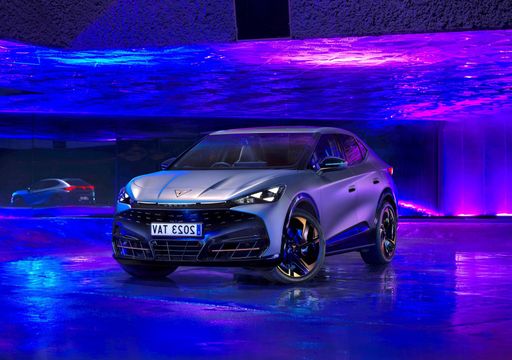 @ seat-mediacenter.com
@ seat-mediacenter.com
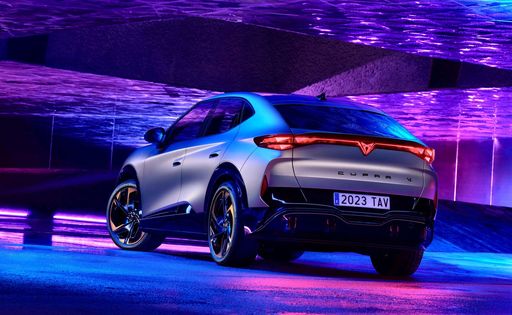 @ seat-mediacenter.com
@ seat-mediacenter.com
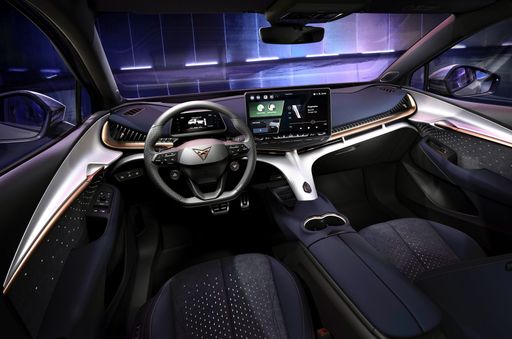 @ seat-mediacenter.com
@ seat-mediacenter.com
Ford Mustang Mach-E
The Ford Mustang Mach-E marks a new chapter in the legacy of the iconic American brand, combining classic muscle car aesthetics with modern electric vehicle technology. Its sleek design captures the spirit of innovation while offering a spacious and tech-savvy interior for enhanced driving comfort. The Mach-E promises an exhilarating driving experience, packed with cutting-edge features that set a new standard for electric SUVs.
details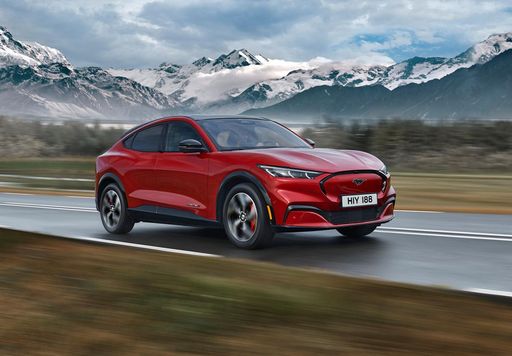 @ mustang.fordpresskits.com
@ mustang.fordpresskits.com
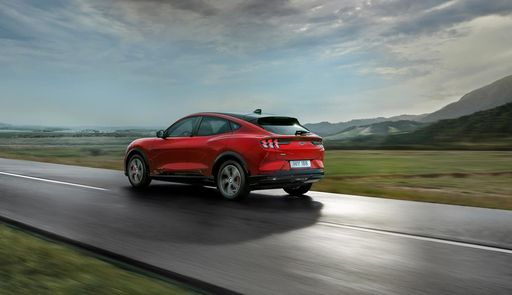 @ mustang.fordpresskits.com
@ mustang.fordpresskits.com
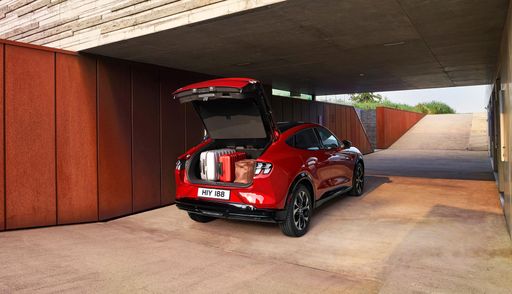 @ mustang.fordpresskits.com
@ mustang.fordpresskits.com
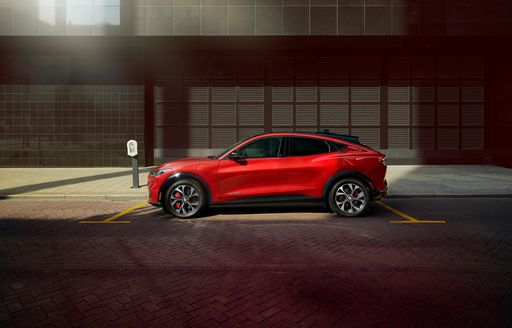 @ mustang.fordpresskits.com
@ mustang.fordpresskits.com
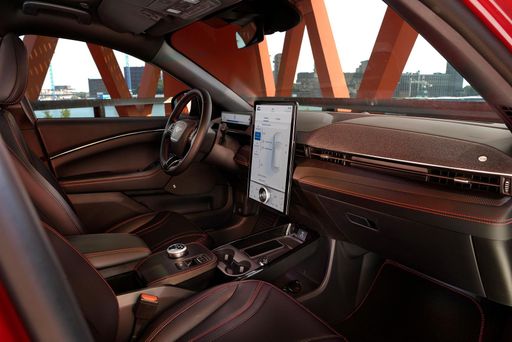 @ mustang.fordpresskits.com
@ mustang.fordpresskits.com
The automotive market is evolving rapidly, driven by innovation and a growing demand for electric vehicles. In this context, we pit two exciting contenders against each other: the CUPRA Tavascan and the Ford Mustang Mach-E. Both are electric SUVs that promise thrilling performance and cutting-edge technology, but how do they truly compare? Let’s delve into their specifications and features.
Design and Dimensions
Both the CUPRA Tavascan and the Ford Mustang Mach-E exude a sporty vibe with modern aesthetics, but their design philosophies differ slightly. The Tavascan measures 4644 mm in length, 1861 mm in width, and 1597 mm in height. It features the distinctive CUPRA design language with sharp lines and an aggressive stance.
On the other hand, the Mustang Mach-E is a bit larger, with lengths ranging from 4713 mm to 4750 mm, and width from 1881 mm to 1882 mm. Its silhouette pays homage to the legendary Mustang while adding a contemporary touch befitting an SUV. The taller profile of the Mach-E, at heights between 1613 mm and 1648 mm, gives it a more commanding presence on the road.
Powertrains and Performance
Equipped with impressive electric powertrains, the CUPRA Tavascan boasts two variants: a 286 HP (210 kW) version and a more powerful 340 HP (250 kW) model. It provides exhilarating acceleration, achieving 0-100 km/h in just 6.8 seconds to 5.5 seconds, depending on the variant. The Tavascan supports both rear-wheel and all-wheel drive configurations and features a torque output ranging between 545 Nm and 679 Nm.
The Ford Mustang Mach-E offers a diverse power range across various trims, starting from 269 HP to an astonishing 487 HP in the GT variant. Acceleration times also impress, with the fastest model recording 0-100 km/h in just 3.5 seconds. The Mach-E provides multiple drive configurations as well, with torque ranging from 430 Nm up to a massive 880 Nm, which ensures that it delivers thrilling performance regardless of the variant.
Electric Range and Efficiency
Range anxiety is a key concern for many prospective EV buyers. The CUPRA Tavascan offers an electric range of up to 569 km, allowing for long journeys without frequent charging stops. In terms of efficiency, it consumes between 15.1 kWh/100km to 16.5 kWh/100km, making it a cost-effective option for electric driving.
In comparison, the Ford Mustang Mach-E boasts an impressive electric range of up to 600 km in its most efficient configuration, ensuring it stays competitive. It consumes more energy, ranging from 17.3 kWh/100km to 21.3 kWh/100km, depending on the variant. While both vehicles are environmentally friendly, the Tavascan slightly edges ahead in efficiency.
Interior and Technology
Inside, the CUPRA Tavascan provides a modern and driver-focused environment, equipped with a plethora of digital displays and premium materials. It seats five comfortably and offers a significant trunk capacity of 540 liters, making it practical for families or active lifestyles.
The Mustang Mach-E, while similarly offering seating for five, focuses heavily on a tech-centric experience. Its interior features Ford's latest SYNC technology, providing seamless integration with smartphones and navigation systems. However, trunk capacity is slightly smaller at 402 liters, potentially limiting cargo space for users who prioritize storage.
Conclusion: Which SUV Reigns Supreme?
In the battle of electric SUVs, the CUPRA Tavascan and Ford Mustang Mach-E both stand out with their unique offerings. The Tavascan excels in efficiency and trunk space, delivering strong performance with a sporty design. The Mustang Mach-E, on the other hand, caters to a broader range of powertrains and offers remarkable range capabilities, alongside an advanced tech-laden interior.
Ultimately, the choice between the two will depend on personal preferences and priorities in features, performance, and design. Regardless of your selection, both models represent a bright future for electric mobility, packed with innovations that are set to redefine the driving experience.

|

|
|
|
|
Costs and Consumption |
|
|---|---|
|
Price
45600 - 49600 £
|
Price
48400 - 66900 £
|
|
Consumption L/100km
-
|
Consumption L/100km
-
|
|
Consumption kWh/100km
15.2 - 16.5 kWh
|
Consumption kWh/100km
17.7 - 21 kWh
|
|
Electric Range
522 - 570 km
|
Electric Range
470 - 600 km
|
|
Battery Capacity
77 kWh
|
Battery Capacity
73 - 91 kWh
|
|
co2
0 g/km
|
co2
0 g/km
|
|
Fuel tank capacity
-
|
Fuel tank capacity
-
|
Dimensions and Body |
|
|---|---|
|
Body Type
SUV
|
Body Type
SUV
|
|
Seats
5
|
Seats
5
|
|
Doors
5
|
Doors
5
|
|
Curb weight
2178 - 2273 kg
|
Curb weight
2161 - 2351 kg
|
|
Trunk capacity
540 L
|
Trunk capacity
519 L
|
|
Length
4644 mm
|
Length
4713 - 4743 mm
|
|
Width
1861 mm
|
Width
1881 mm
|
|
Height
1597 mm
|
Height
1613 - 1624 mm
|
|
Payload
507 - 522 kg
|
Payload
368 - 450 kg
|
Engine and Performance |
|
|---|---|
|
Engine Type
Electric
|
Engine Type
Electric
|
|
Transmission
Automatic
|
Transmission
Automatic
|
|
Transmission Detail
-
|
Transmission Detail
Reduction Gearbox
|
|
Drive Type
Rear-Wheel Drive, All-Wheel Drive
|
Drive Type
Rear-Wheel Drive, All-Wheel Drive
|
|
Power HP
286 - 340 HP
|
Power HP
268 - 487 HP
|
|
Acceleration 0-100km/h
5.5 - 6.8 s
|
Acceleration 0-100km/h
3.8 - 6.2 s
|
|
Max Speed
180 km/h
|
Max Speed
180 - 200 km/h
|
|
Torque
545 - 679 Nm
|
Torque
525 - 950 Nm
|
|
Number of Cylinders
-
|
Number of Cylinders
-
|
|
Power kW
210 - 250 kW
|
Power kW
197 - 358 kW
|
|
Engine capacity
-
|
Engine capacity
-
|
General |
|
|---|---|
|
Model Year
2024
|
Model Year
2025
|
|
CO2 Efficiency Class
A
|
CO2 Efficiency Class
A
|
|
Brand
CUPRA
|
Brand
Ford
|
CUPRA Tavascan
Introducing the CUPRA Tavascan: The Future of Electric SUVs
The automotive industry is witnessing a revolution, and at the forefront is the CUPRA Tavascan, an electric SUV that promises to reshape the landscape of sustainable driving. As a brand under the umbrella of the renowned SEAT, CUPRA has rapidly established itself with models that combine dynamic design with cutting-edge technology. Let us delve into the details of the Tavascan, an embodiment of innovation and performance.
Powertrain and Performance
The CUPRA Tavascan impresses with its electric powertrain offerings. It is available in two versions, catering to different driving preferences. With power outputs ranging from 286 to 340 PS, the Tavascan ensures an electrifying drive on both rear-wheel and all-wheel-drive configurations. Regardless of the choice, instant torque and seamless acceleration allow it to reach 0-100 km/h in just 5.5 to 6.8 seconds.
Under the hood lies a sophisticated 77 kWh battery pack, ensuring a driving range between 521 and 568 km on a single charge. The efficiency ratings are noteworthy, with energy consumption falling between 15.2 to 16.5 kWh/100 km, making it one of the more efficient options in its category.
Leading-Edge Technology and Features
The Tavascan is designed with the modern driver in mind, integrating state-of-the-art technology. Inside, drivers and passengers will experience a premium digital cockpit, where a large infotainment system, customisable ambient lighting, and cutting-edge connectivity options create a seamless blend of luxury and functionality.
In terms of safety and driver assistance systems, the Tavascan does not disappoint. It includes advanced features such as adaptive cruise control, lane-keeping assist, and traffic sign recognition, positioning it as a leader in automotive safety.
Sustainable Design and Practicality
The exterior design of the CUPRA Tavascan is striking, with aerodynamic contours that speak of its performance capabilities. Its aesthetic is both muscular and refined, underscoring CUPRA’s commitment to sporty elegance. The SUV's dimensions allow for a spacious interior, accommodating up to five passengers comfortably, alongside a generous 540-litre boot capacity.
Cost Efficiency and Environmental Impact
Operating costs are a critical consideration for any vehicle, and the CUPRA Tavascan excels in this department with monthly costs ranging from €1,280 to €1,424. The cost per kilometre also remains economical, thanks to its efficient energy consumption.
Further enhancing its appeal, the Tavascan proudly boasts a CO2 efficiency class of A, with zero direct emissions, reflecting CUPRA’s commitment to sustainability.
A Vision for the Electric Future
The 2024 CUPRA Tavascan embodies a bold vision for the future of automobiles. It combines state-of-the-art technology, outstanding performance, and an environmentally conscious footprint, setting new standards for electric SUVs. Whether you're an eco-conscious driver or a tech enthusiast, the Tavascan offers a compelling package that is hard to overlook.
Ford Mustang Mach-E
Introducing the Ford Mustang Mach-E: A New Era of Electric Performance
In a groundbreaking blend of heritage and innovation, the Ford Mustang Mach-E heralds a new era for the iconic Mustang brand. Combining the robust styling of an SUV with the electrifying performance typical of the Mustang lineage, this model exemplifies Ford's commitment to an electrified future.
Advanced Power and Performance
The Ford Mustang Mach-E is available in several versions, each boasting impressive performance metrics. With power outputs ranging from 269 to an exhilarating 487 PS, this electric SUV ensures there’s a model suitable for both spirited drivers and efficiency-focused commuters. The Mach-E's automatic transmission and choice between rear-wheel or all-wheel drive offer seamless driving dynamics, enabling a 0-100 km/h acceleration as quick as 3.5 seconds, ensuring that thrill is not compromised despite its electric heart.
Efficiency and Range: Leading the Charge
The Mustang Mach-E offers two battery options: Standard Range and Extended Range, catering to diverse driving needs. With electric consumption rates between 17.3 and 21.3 kWh/100km, the Mach-E provides an impressive electric range of up to 600 km, allowing for longer journeys with fewer charging stops. The CO2 efficiency class A further underlines its environmental credentials, making it an ideal choice for those seeking a sustainable, yet powerful, motoring experience.
Design and Dimensions: Fusing Style with Practicality
Measuring between 4713 mm and 4750 mm in length, the Mach-E’s design is both fashionable and functional. Its athletic stance and muscular lines pay homage to the Mustang's storied history, while modern SUV cues ensure ample interior space, accommodating up to five passengers with ease. The 402-litre boot capacity also caters to practical needs, making the Mach-E a versatile option for families and adventurers alike.
Innovative Features: Technology at Your Fingertips
Ford has equipped the Mustang Mach-E with cutting-edge technology to enhance the driving experience. From an intuitive infotainment system with a large touchscreen interface to advanced driver assistance features, the Mach-E ensures connectivity and safety as standard. With its digital dashboard, the Mach-E keeps critical information at eye level, ensuring drivers remain informed and engaged.
Pricing and Value: Electric Luxury within Reach
The Ford Mustang Mach-E bridges the gap between luxury and affordability, with pricing ranging from €55,800 to €80,300. Despite its premium features and performance, the Mach-E remains a competitively priced entry into the electric vehicle market. Moreover, the running costs, including estimated monthly costs between €1,276 and €1,722, make the Mach-E an economical choice over the long term.
Conclusion: The Future of Ford's Legacy
Blending the mythical allure of the Mustang with modern, sustainable technology, the Ford Mustang Mach-E truly represents the future of performance motoring. Whether you are drawn by its dynamic capabilities, its advanced technologies, or its stylish practicality, the Mach-E proves that an electric future need not forsake excitement or tradition.
Which drive types are available for the CUPRA Tavascan?
Available as Rear-Wheel Drive or All-Wheel Drive.
The prices and data displayed are estimates based on German list prices and may vary by country. This information is not legally binding.
